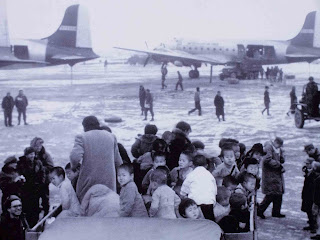The Battle of Overloon began on September 26th, 1944 and lasted three weeks. A newly equipped German tank division was pitted against the U.S. Army’s 7th Armored Division. The Allies vastly underestimated the enemy’s size and strength, and the British wound up sending in two divisions to finish things. Nearly 2,500 soldiers and hundreds of civilians died in the battle. By the time the fighting migrated to the south and east, there wasn’t much left of the Dutch village of Overloon. Only one house survived intact. Today, the town of Overloon is home to the Dutch National War and Resistance Museum and the Marshall Museum which boasts one of the largest collections of military vehicles, vessels and aircraft in Europe.
While in Holland the Bazflyers stayed with friends who live near Venlo, a town with an unusual WWII connection with New Zealand. It involves Bill Hickson who in 1943 was a New Zealand Air Force pilot on 35 Squadron based out of Graveley in England. Bill was shot down while on a night mission over Europe. He came down near Venlo but lost one of his flying boots in the process. Eventually captured by the Gestapo, Bill spent the remainder of the war in captivity. As for his boot, it was found and looked after by local Dutch people for the next 66 years before it was reunited with Bill on his 87th birthday. Bill's infamous boot now resides in the RNZAF Museum at Wigram.











































